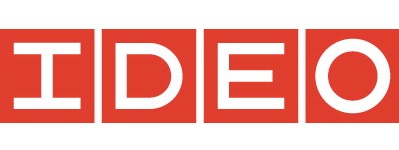Designing to Scale
Talk to any social enterprise leader, funder, or on-the-ground BoP development practitioner for long enough and you’re bound to come to the issue of ‘scale.’ We’ve talked about it on NextBillion frequently (most recently in the Ayllu series as well as Francisco Meija and Manual Bueno’s series) and we’ll be talking about it for many years to come. I recently had the chance to connect with someone who helps organizations think about the topic on a daily basis: Jocelyn Wyatt, leader of IDEO’s Social Innovation domain. Jocelyn is leading a panel on scale in just a couple of days at SoCap 2010 along with speakers from Living Goods and Mercy Corps. Ahead of the panel I asked Jocelyn what attributes a product or service needs to reach scale, what steps BoP organizations can take to scale their impact, and what organizational models she finds particularly impressive regarding scale.

But before we get into any of that, here’s what Jocelyn had to say when I asked what the heck scale means anyway.
Josh Cleveland, NextBillion.net: Before we jump in to a discussion about scale, lets get clear on how we define that word in relation to development at the BoP. Tell us briefly how you define scale
Jocelyn Wyatt, IDEO: When I think of scale, I think about reaching many people with a given offering. Scale is about getting big and increasing impact. That said, scale could happen through spreading innovations or solutions from one organization to others, it doesn’t always mean growing a single organization.
NextBillion.net: It is clear that in order to achieve broad distribution and impact an enterprise needs both a scalable product or service and a scalable model of distribution. What are some of the attributes of both that need to be in place when scaling up at the BoP? How are products that are better designed to reach more consumers different? How are the models that get those products into more hands better designed?
Jocelyn Wyatt, IDEO: What is considered good design is so dependent on the culture, society, and organization in which it sits. I wouldn’t want to state any universal traits of well-designed products, services, or business models. At IDEO, we believe that a design that is truly human-centered is good and that designing for people will lead to uptake and impact.
Three things we think about when designing for BoP markets are affordability, appropriateness, and attractiveness. Any solution must meet the needs of the people it’s meant to serve, be liked by them, and be priced at an affordable level. When these three stipulations are meant, it generally means the design is good.
NextBillion.net: How should an organization seeking to ramp up distribution and consumer uptake go about improving their model? What are some of the key steps that you’d recommend an organization take to bridge the gap from local impact to regional or global impact?
Jocelyn Wyatt, IDEO: As we’ll discuss in our panel at SoCap, it’s important to design for scale. This generally means starting a program with a small prototype to really learn from the feedback that you’re getting from your customers. From there, you can move to a pilot, where you try and learn with a small number of people. Prototyping and piloting allow organizations to continuously learn from their users and iterate their offerings.
Once the model has been tried and is feeling right, an organization could consider scaling into a new geography or spreading their model to other organizations. It’s important to recognize the different cultural and societal aspects of a new geography and go through that insight, design, prototype, and pilot process again in the new location.
NextBillion.net: Can you tell us about some of the key innovations you’ve seen recently of organizations getting it right in this regard?
Jocelyn Wyatt, IDEO: Joe Speicher from Living Goods and David Lehr from Mercy Corps are speaking on the SoCap panel with me and were selected because their organizations have both done really well at designing for scale. They started small, iterated on their models once they had user feedback, and are now looking to expand and increase their reach and impact.
Grameen Bank and BRAC are two other organizations that for years have undertaken the design process to understand the needs of their customers, designed innovative solutions to meet those needs, prototyped, piloted, and scaled their offerings. Both of them have taught us that scale is achievable but sustainable scale takes time.


